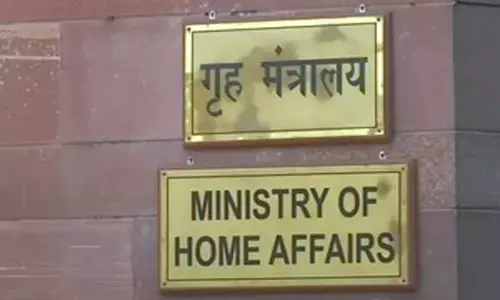Chandrayaan-3 successfully inserted into lunar orbit: ISRO
Share :

Chandrayaan-3 spacecraft, which covered about two-thirds of the distance to the Moon since its launch, successfully entered into the Lunar orbit on Saturday, according to ISRO. "MOX, ISTRAC, this is Chandrayaan-3. I am feeling lunar gravity," Indian Space Research Organisation (ISRO) tweeted.
"Chandrayaan-3 has been successfully inserted into the lunar orbit. A retro-burning at the Perilune was commanded from the Mission Operations Complex (MOX), ISTRAC, Bengaluru. The next operation - reduction of orbit – is scheduled for Aug 6, 2023, around 23:00 Hrs. IST," ISRO added. Chandrayaan-3, India's third lunar exploration mission, was launched on GSLV Mark 3 (LVM 3) heavy-lift launch vehicle successfully from the Satish Dhawan Space Centre in Andhra Pradesh's Sriharikota on July 14.
Notably, this is the fourth country after the US, China, and Russia, that landed its spacecraft on the surface of the moon and demonstrate the country's ability for a safe and soft landing on the lunar surface. Upon landing, it will operate for one lunar day, which is approximately 14 Earth days. One day on the Moon is equal to 14 days on Earth.
Chandrayaan-3 components include various electronic and mechanical subsystems intended to ensure a safe and soft landing such as Navigation sensors, propulsion systems, guidance & control among others. Additionally, there are mechanisms for the release of Rover, two-way communication-related antennas and other onboard electronics. The stated objectives of Chandrayaan-3 are safe and soft landing, rover roving on the moon's surface, and in-situ scientific experiments.
The approved cost of Chandrayaan-3 is Rs. 250 crores (Excluding Launch Vehicle Cost).Chandrayaan-3's development phase commenced in January 2020 with the launch planned sometime in 2021. However, the Covid-19 pandemic brought an unforeseen delay to the mission's progress.Chandrayaan-3 is the ISRO's follow-up attempt after the Chandrayaan-2 mission faced challenges during its soft landing on the lunar surface in 2019 and was eventually deemed to have failed its core mission objectives. The key scientific outcomes from Chandrayaan-2 include the first-ever global map for lunar sodium, enhancing knowledge on crater size distribution, unambiguous detection of lunar surface water ice with IIRS instrument and more. The mission has been featured in almost 50 publications.
Moon serves as a repository of the Earth's past and a successful lunar mission by India will help enhance life on Earth while also enabling it to explore the rest of the solar system and beyond.
Woman injured in stabbing attack in Tokyo, suspect at large
Bengal cop booked for murder over mysterious death of woman home guard, SIT to probe case
Staffer recalls horror of 7-kg gold robbery by armed gang in Karnataka’s Hunsur
25-Year-Old Airline Cabin Crew Member Dies At Gurugram Party; Police Begin Investigation














